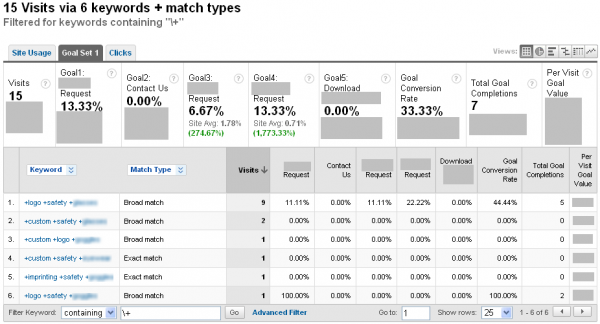How to boost your SEO using Google Ads
The supremacy of data stays true in the world of search engine marketing. That’s why it’s common to see today’s marketers using data available from PPC campaigns to better optimize their SEO for better results. Some even run PPC ad campaigns with the primary aim of harvesting data to boost organic visibility.
While there’s a treasure trove of data on most PPC platforms, it’s important to know where to look for actionable insights that actually help your search engine optimization. These insights would be key in helping your reach your targets faster, alongside saving you time and resources.
Using the example of the Google Ads (formerly known as Adwords) platform and Google’s search, let’s look at how your PPC campaigns can aid your SEO efforts.
1. Keywords that Generate Conversions
SEO generates the best ROIs when a site ranks for keywords with the best conversion rates. You can fish out these keywords from an SEM campaign using the following steps:
a. Set up conversion tracking before you begin your Google Ads
b. After running your Ads for a short while, go to your search terms report to find keywords with the highest conversion rate; the keywords requiring the fewest click to get a conversion.
c. When you find these keywords, use google search to find the top websites currently ranking for such keywords. eg.
d. Use a tool such as Ahrefs Site Explorer and Moz to find out how much traffic this keyword gets for this website.

e. If such an amount of traffic is great for you relative to your expected conversion rate (gotten from your Ad campaign), then this is a keyword you should try optimizing for.
2. Finding New Keyword Opportunities
15% of daily Google searches are completely new to the search engine. This reflects the dynamism of human curiosity and the pace of today’s world. Marketers can tap into this by constantly optimizing content for newer interests and keywords.
To find keyword opportunities using Google Ads, you can use broad match modifiers when bidding for a keyword. This implies marking the words with a plus (+) sign, thereby ensuring that your ad would appear in search queries outside your core set of keywords. For instance, bidding on the keyword “Chelsea jersey” could limit your ad’s reach to that search query alone, while bidding on “+chelsea +jersey” would expand your ad’s reach to searches like “Chelsea home jersey” and “Drogba Chelsea jersey”.

After running Ads for a while, go to your Search terms report (Under the “Keywords” section on your left-hand side) to find new search queries that led users to your site. You can filter using your preferred number of impressions, clicks, CTRs, etc for relevance.

This way, you’d find long-tail keywords worth optimizing for and new topics worth pursuing.
3. Improve Click-Through Rates on Organic Search Results
Higher click-through rates are known to help your site’s organic rankings. You can improve your CTR with help from data gotten from Google Ad campaigns, which would in turn boost your SEO efforts.
A/B testing Ads for different pages/keywords within your site would help you discover pages and keywords with low CTRs, despite having potential for high traffic. The title tags, page structure, links and more of these pages can then be optimized for a better CTR.
4. Get Useful Backlinks
You can gain quality backlinks for your site off traffic from your Google Ads. A proven way to do this is driving your paid traffic to queries with link intent; queries that are used by people looking to be referred to other resources.

This tends to work particularly well with blog posts filled with statistics or listicles (lists that are fleshed out into article form). However, you need content with relevance and quality to make the most of this.
Like the article? Why not share within your network?
